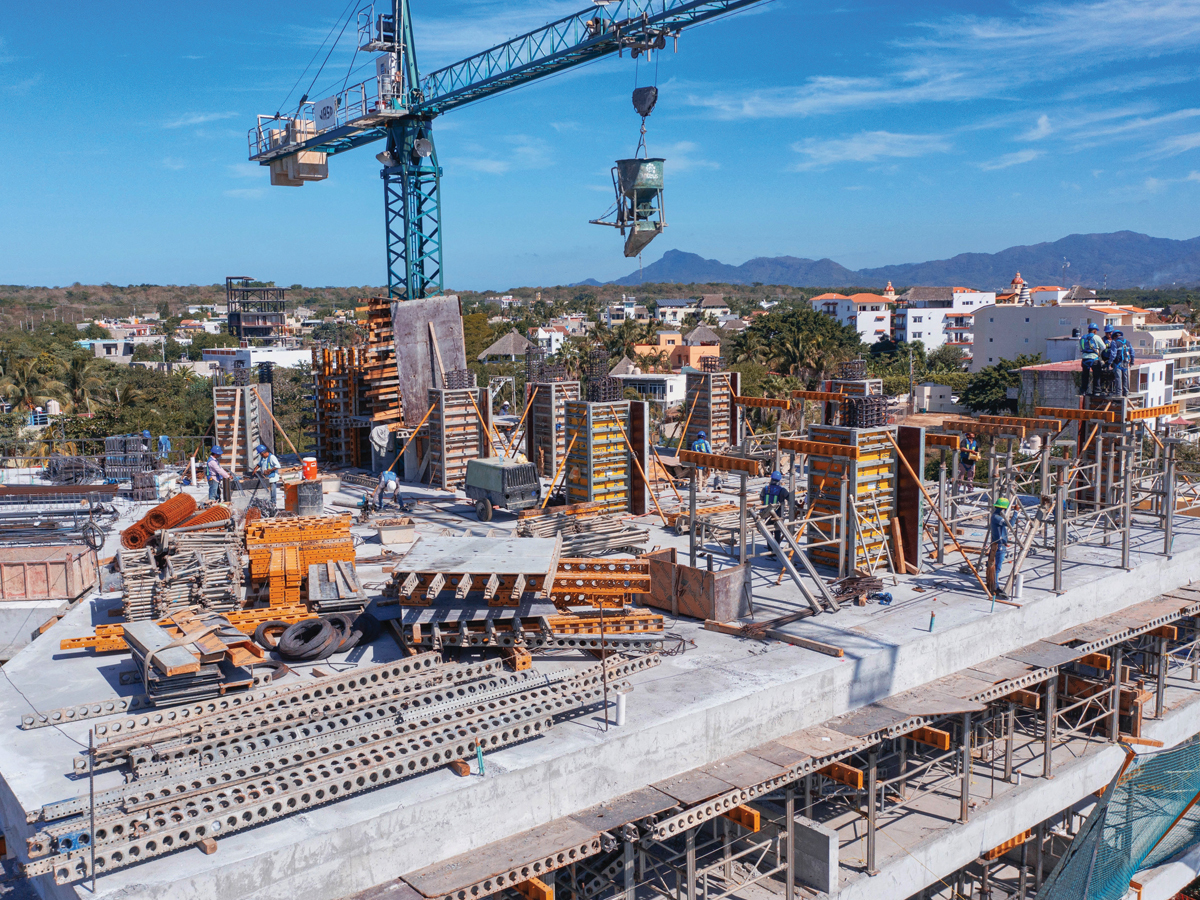Soil Coefficients: CAS, COS and CUS
The Soil Absorption Coefficient (CAS), Land Use Coefficient (CUS) and Land Occupation Coefficient (COS) are three of the most important aspects that must be considered during the initial stage of any architectural and urban project, as they have a direct impact on the viable building possibilities for any given property. These mathematical factors are part of the regulations that each state within Mexico establishes within its urban planning and territorial ordering programs, which are then applied by each municipality.
To better understand their differences and implications, we spoke with architect Enrique Navarro López, who, from 2004 to 2007, was the deputy director of Urban Planning for Puerto Vallarta. He has an extensive knowledge regarding these and other factors that mandate the way in which one can build in particular areas or properties.

The Soil Absorption Coefficient (CAS), Land Use Coefficient (CUS) and Land Occupation Coefficient (COS) are three of the most important aspects that must be considered during the initial stage of any architectural and urban project.
Soil Absorption Coefficient (CAS)
“The CAS, also known the “Green Space Coefficient”, is the part of a property that must be left completely free of any building with roofs, pavement, basements or any other impermeable material, so that it is only intended for garden, green area or tree planting. This coefficient is obtained by dividing the surface of the green area by the total surface of the lot or property”, he explains.
As an example, “if you have a plot of 100 square meters with a CAS of 10, it means that 10 percent of the area should be left free for absorption; that is, 10 square meters”.
Land Occupation Coefficient (COS)
“This is the factor that when multiplied by the total area of the land, will give us the maximum extension of the property on which we can build,” Navarro mentions.
That is to say, the COS is the arithmetic relationship that exists between the constructed area on the first floor and the total area of the land or property where the project is located.
To clarify, Navarro explains, “If we have a plot of land that is 100 square meters and the regulations establish a Land Occupation Coefficient of 0.8, we multiply 100 by 0.8 and it gives us 80 as a result, meaning we can build on an area of 80 square meters. In other words, it will be built on 80 percent of the area and the remaining 20 percent must be left free to be used as green or open areas.”
Land Use Coefficient (CUS)
“This is the factor that, multiplied by the total area of the land, will give us the maximum number of square meters that can be built on a lot, including all the levels of a structure,” he explains.
The CUS is the mathematical relationship between the total area of the property and the total area of the proposed project, including the ground floor and the upper floors.
For example, “If on the same lot of 100 square meters we have a CUS of 1.6, we multiply 100 by 1.6 to equal 160. Therefore, we can develop a building with a total area of 160 square meters, distributed across the number of levels it will have.”

How are These Factors Calculated?
The CAS, COS and CUS vary according to each area of a municipality. In highly populated areas where the coefficients are higher, the development regulations are different than in residential areas with lower coefficients, with the intention to maintain lower density neighborhoods. Land use (commercial, residential, industrial, etc.) also comes into play in this regard.
To learn the CAS, COS and CUS of a property located in Puerto Vallarta, it is necessary to complete the Dictamen de Trazos, Usos y Destinos Específicos with the Department of Urban Planning at City Hall. All requirements can be found online at puertovallarta.gob.mx. For other Banderas Bay locations, these factors are found through a Constancia de Compatibilidad Urbanística, managed by the Department of Urban Development, Ecology and Territorial Planning. The requirements for this procedure can be found at bahiadebanderas.gob.mx.
“The CAS, COS and CUS are important for urban development to be harmonious and guarantee a suitable density for each area of the city. Investors are particularly interested in knowing these factors because they indicate the potential of a piece of land and, of course, they translate into an economic indicator.”



